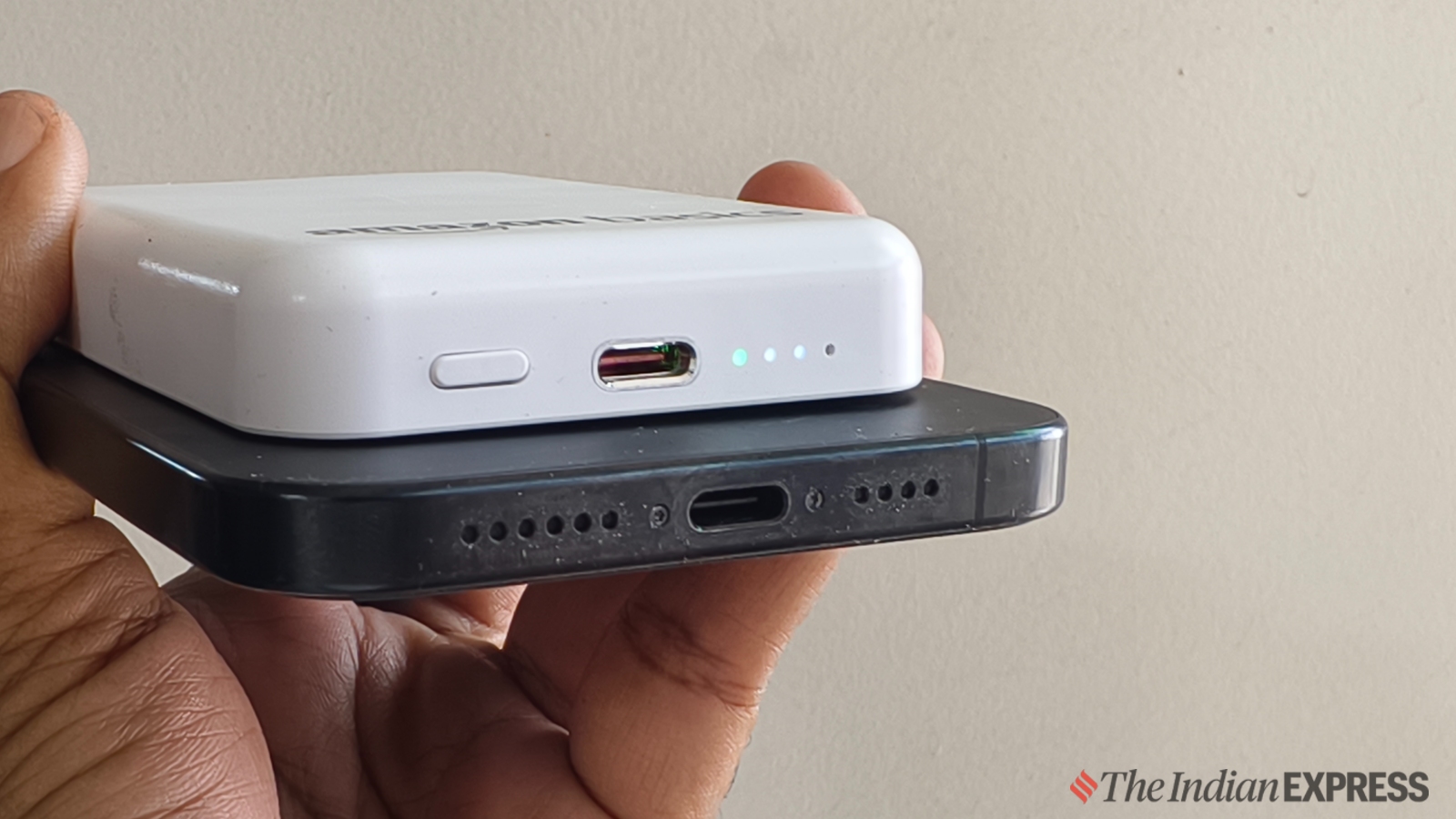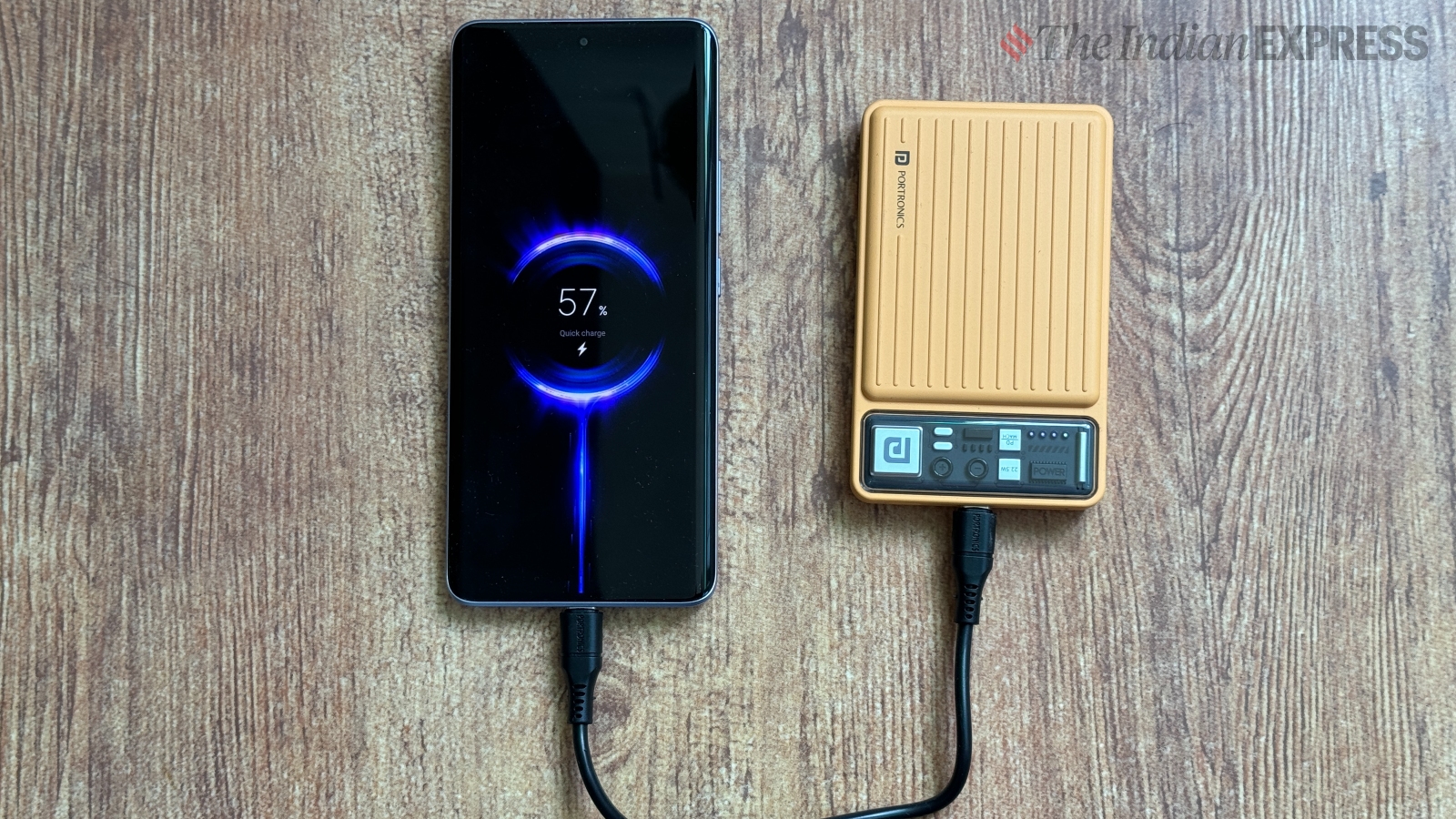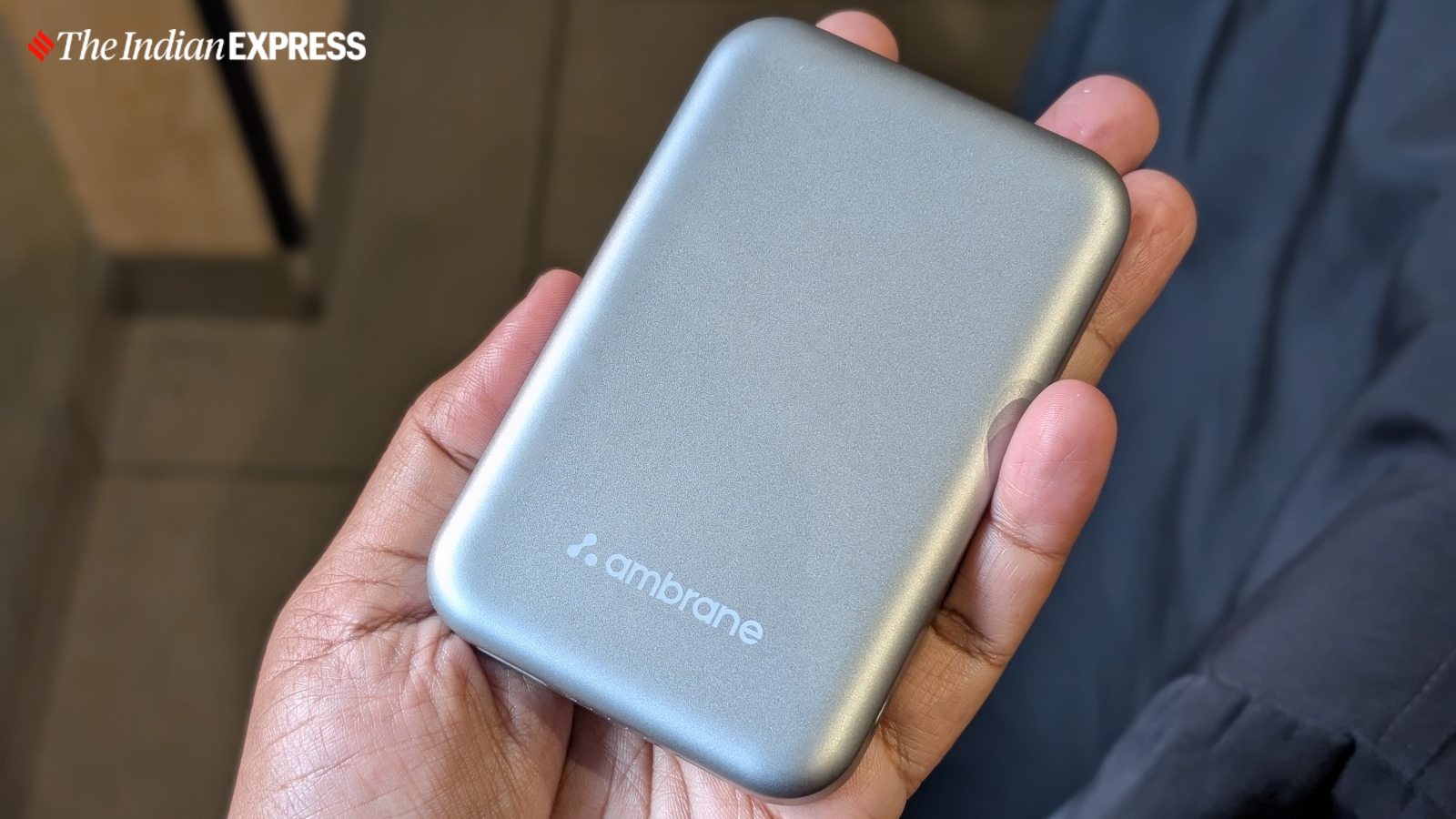A power bank is a critical accessory for those who are regularly away from home and need their devices, as it guarantees power on-the-go. However, there are some critical factors to keep in mind while buying a power bank for daily use, to ensure your devices’ specifications are met. And, most importantly to ensure that it is a safe and reliable device.
Most devices have a required voltage to charge at. For most recent smartphones, this stands at five volts. However, some phones need a higher voltage as well. However, all power banks are not compatible with the varying voltage. If the voltage provided by the power bank is lower, it will not charge the device.
 Magsafe power bank. (Express Photo)
Magsafe power bank. (Express Photo)
Hence, before buying a power bank, it is critical to check both your device charger’s voltage and the power bank’s voltage, to ensure compatibility and charging.
Capacity of charge
A power bank should ideally be able to fully charge your smartphone from zero to 100 percent twice, if not thrice. To ensure this, you should check your phone’s capacity either online, or from the phone’s settings. This will likely be in milliamperes-hour (or mAh).
Then, it is ideal to take a power bank with double, if not triple the capacity. For instance, for a phone with a 4,000 mAh, it is ideal to look out for a power bank with at least an 8,000 mAh capacity.
Safety
Not all power banks are guaranteed to provide safe power to your devices. For instance, an unsafe power bank could lead to overcharging, and potentially even fry your device’s batteries. Hence, before buying a power bank, it is crucial to check its features with respect to your needs as well.
For instance, the power bank should be able to stop itself from over-charging, protect its integrated circuit, and most importantly, not have any risk of short circuiting. This can both cause harm to your device and physical harm to you.
Story continues below this ad
Battery type
Another potential safety hazard can be the type of battery fitted in the power bank. Some lower-range power banks can contain low-quality battery cells, which have a higher chance of leakage, or even run a risk of explosion.
 Portronics power bank. (Express Photo)
Portronics power bank. (Express Photo)
To ensure optimal safety, look out for a power bank with either a Lithium Polymer or Lithium Ion cell, which is also Bureau of Indian Standards Act (BIS) certified. While power banks with these batteries can be slightly more expensive, the safety that they guarantee makes it worth it.
Number and type of charging ports
This is a crucial factor for those who need to charge more than one device at a time. Some power banks only come with one charging port, meaning that only a singular device can be charged at once. Furthermore, the ports might also be compatible with a different charger type.
 Ambrane Aerosync Snap power bank. (Express Photo)
Ambrane Aerosync Snap power bank. (Express Photo)
To ensure the power bank fits your criteria, look at the product specifications, and ensure that the number and type of port fits your criteria.
Story continues below this ad
Quality of build
A power bank’s build quality is crucial for both safety and longevity. A sturdy build with good-quality material can ensure security against wear-and-tear. With a power bank being an object made to be used on-the-move, a good build is necessary to have a long-lasting power bank.
Ideally, the case should be a high-quality plastic, or a durable aluminium. This should keep out any dust or water from the internal components, making it much more secure and safe for use as well.
Power indicator
Finally, a power indicator on the power bank is a helpful tool to gauge the amount of power it can provide before needing to be charged, to help account for usage. Even while charging, a power indicator can give you a gauge as to how much power the power bank has, and a rough estimate for how long it will take to charge fully.
This can either be a small screen indicating its battery percentage, or a row of clear light dots. This is particularly useful to also prevent overuse of the power bank away from charge, and prevent overcharging the power bank while it is charging.

